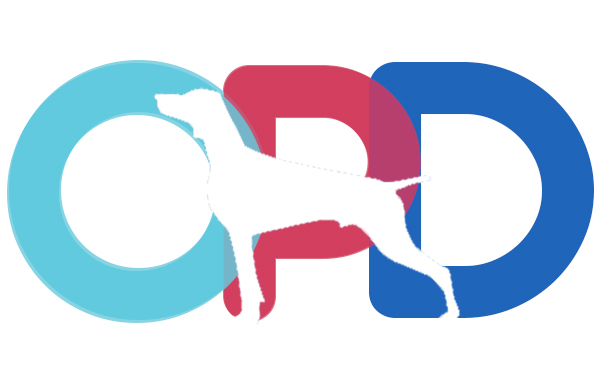Dog epilepsy can feel like a nightmare. Imagine taking a stroll in the park with your happy dog by your side. Out of nowhere, your dog loses consciousness and begins shaking violently, losing control of her bowels. Her head jerks farther back than you think possible and she stops breathing..
…after 20 seconds, she begins to breath again, then a couple minutes later she relaxes and starts to come around. Over the next hour or two everything, with the exception of your state of mind, goes back to normal.
It is difficult to imagine a more frightening experience.
If your dog experiences any kind of seizure, take her to your holistic veterinarian immediately. Following is what you will discuss with your vet:
- Diagnose the type of epilepsy
- Communicate symptoms and type of dog seizure
- Learn the best treatment options
Types of Dog Epilepsy
There are two types of dog epilepsy – primary and secondary – in which seizures can occur from several times a day to once in a blue moon.
Primary epilepsy is typically diagnosed “by default,” where no other causes can be identified. Often times this type is genetic in nature. The first seizure is usually witnessed before 5 years of age.
Secondary dog epilepsy is present when a cause can be determined, such as:
- Anemia
- Low blood sugar
- Liver disease
- Toxic substances reaching the brain from poor nutrition (either your dog or your dog’s mother during pregnancy)
- Brain diseases such as dog distemper
- Head injury
Many holistic veterinarians suspect yearly vaccinations, which may cause mild brain inflammation. If this is the case, the condition may be avoidable by using a holistic vet recommended dog vaccination schedule.
A complete blood panel will help determine one of these underlying problems.
Symptoms & Types of Dog Seizures
If your dog experiences a seizure, it is important for you to observe and remember the details for your veterinarian…
Generalized Seizure
- Animal falls, loses consciousness
- Extends legs rigidly. After a period of time, may “paddle” their legs.
- Stops breathing for 30 seconds or less
- May make chewing motion with jaw
Partial Seizure
- Movements occur only on one side of the body
- Start with one area of the body
Complex Partial Seizure
- Lip-smacking or “fly-biting” behavior
- Chewing
- Aggression or distress
- Disorientation
- Cowering or tucking tail between legs and going off to be alone
- Acting “weird” or different than normal for an extended period of time
Cluster Seizure
- Multiple seizures in a short amount of time
Status Epilepticus
- One long seizure lasting up to 30 minutes or more or multiple Cluster seizures
So how can you avoid these frightening side effects? …you got it! Take the holistic route.
Note: If your dog has already begun conventional treatment, she may need to remain on anti-seizure drugs until recommended to decrease the dosage by your holistic vet.
Dog Epilepsy Treatment Options
Conventional medicine’s objective is to not necessarily cure dog epilepsy but to control it. And – surprise, surprise – all manmade medications, including the following three most commonly prescribed for dog epilepsy, come with a price of harmful side effects:
- Phenobarbitol – Sedative and hypnotic effects, depression, overeating and overdrinking, impaired liver function, physical dependence to drug. May also trigger Status Epilepticus during withdrawals.
- Primidone – Sedative effect, overeating and overdrinking, liver damage.
- Potassium Bromide – similar side effects as listed above
From a holistic perspective, the first step is to switch to a natural dog food diet to eliminate toxins in your dog’s body and to promote healthy brain tissue. Your holistic vet will most likely recommend one or more of the following…
- Exclude all commercial foods and any food that contains additives or artificial coloring
- Reduce organ meat (such as liver and kidney) to no more than once per week
- Consider a vegetarian diet for dogs
- Supplement your dog’s diet once per day with varying amounts of the following depending on your dog’s size:
- Vitamin B good for nerve tissue –10 to 50 milligrams Niacin – 5 to 25 milligrams
- Lecithin – ¼ to 2 teaspoons
- Chelated form of Zinc – 10 to 30 milligrams
- Vitamin C for detoxification – 250 to 1,000 milligrams
- Magnesium and Manganese have also been found to be effective.
Keep your dog away from harmful environmental elements, such as cigarette smoke, car exhaust (from riding in the back of a pick-up, for example), chemicals from various products, and do not allow your dog to lie near a TV or microwave for extended periods of time.
Herbal dog remedies such as common oat, blue vervain and skullcap are effective towards improving the nervous system.
Dog homeopathic remedies can control the seizures without sacrificing other areas of your dogs health as prescription drugs do. Your holistic vet may recommend Belladonna, Thuya or Arnica Montana.
Acupuncture therapy for dogs in conjunction with other treatments has been effective with many patients. Tiny needles are placed in up to ten parts of your dog’s body from 20 minutes to over a month.
Do you believe in holistic pet care? If so, please tell your friends about us. Thank you for supporting our efforts!
